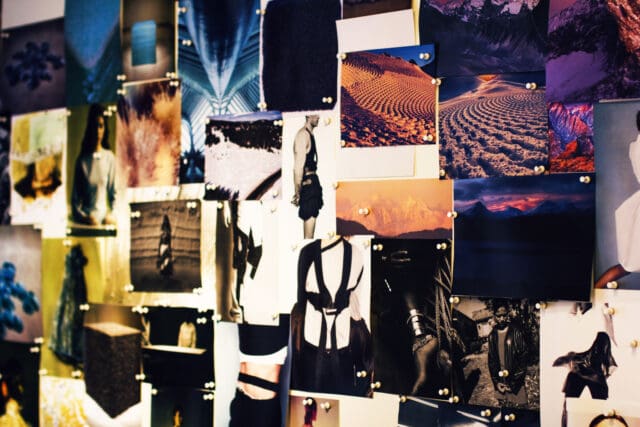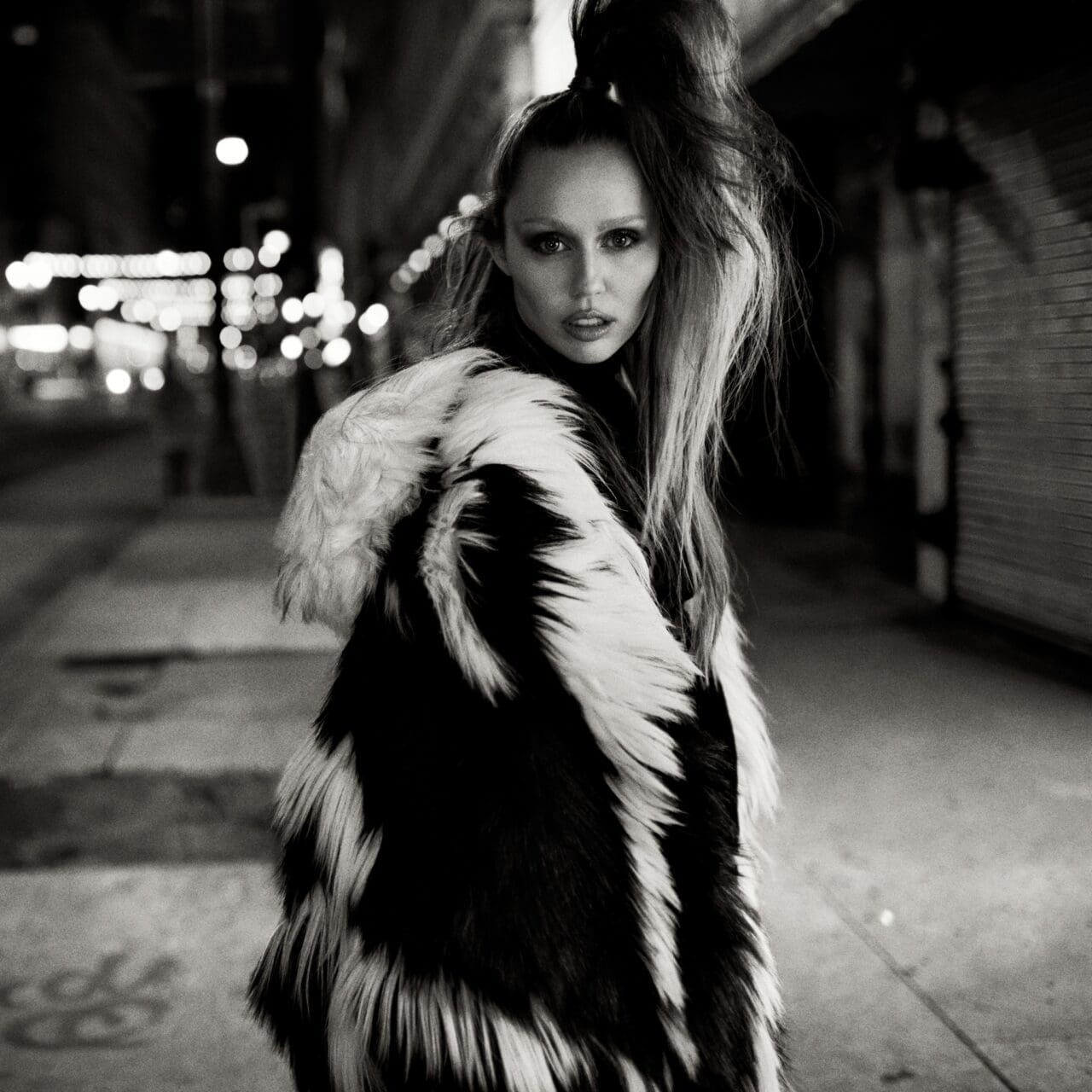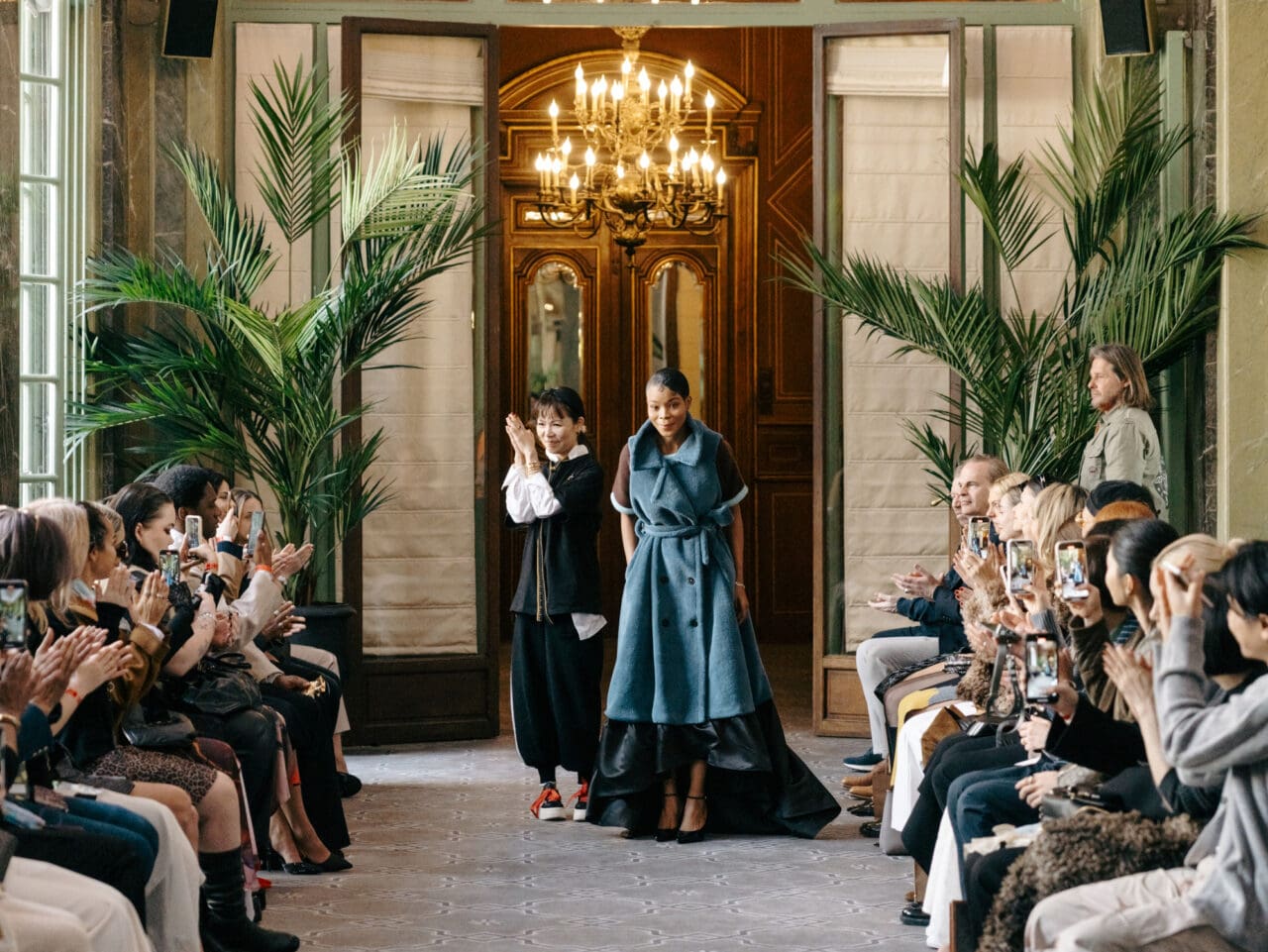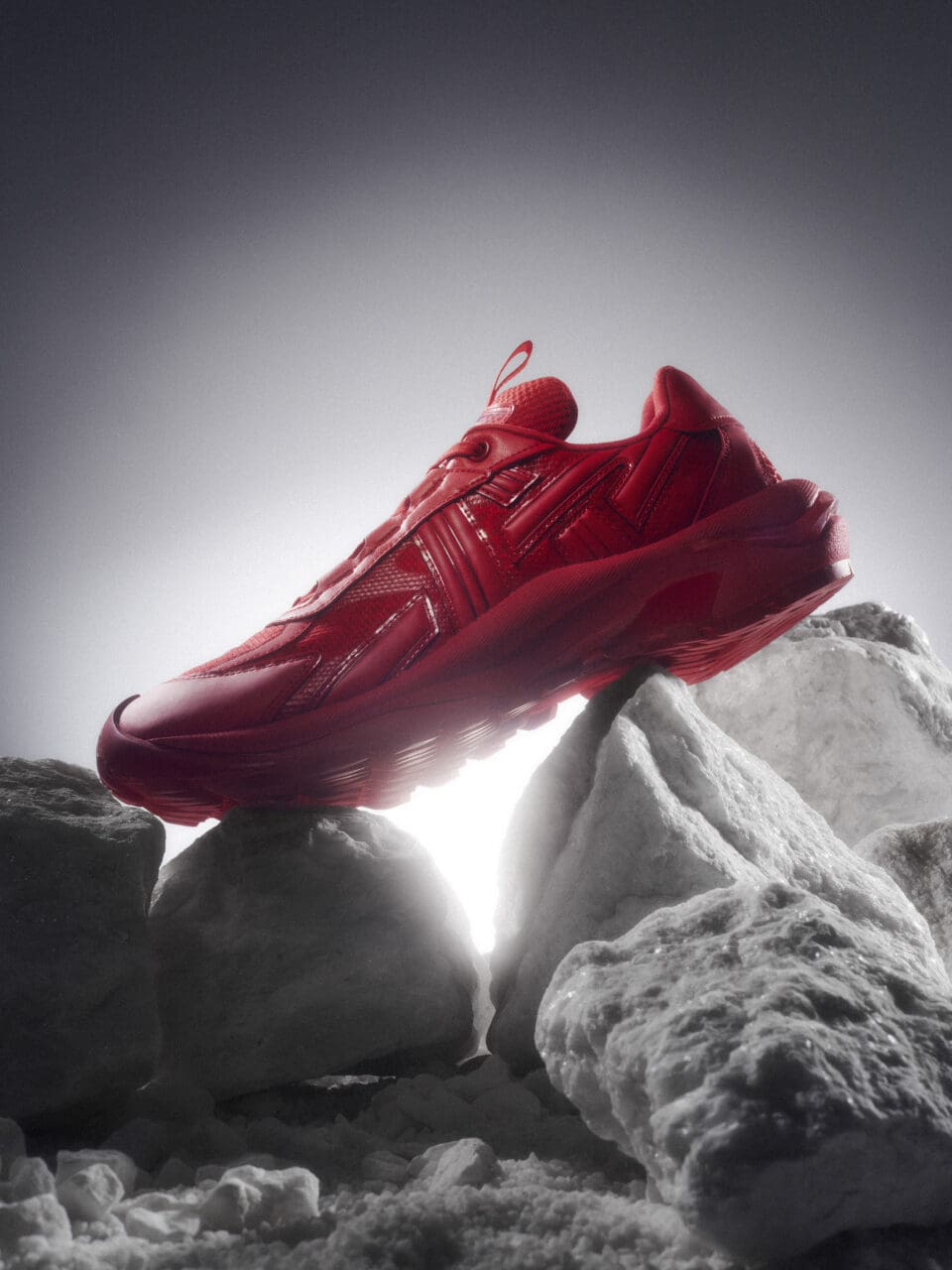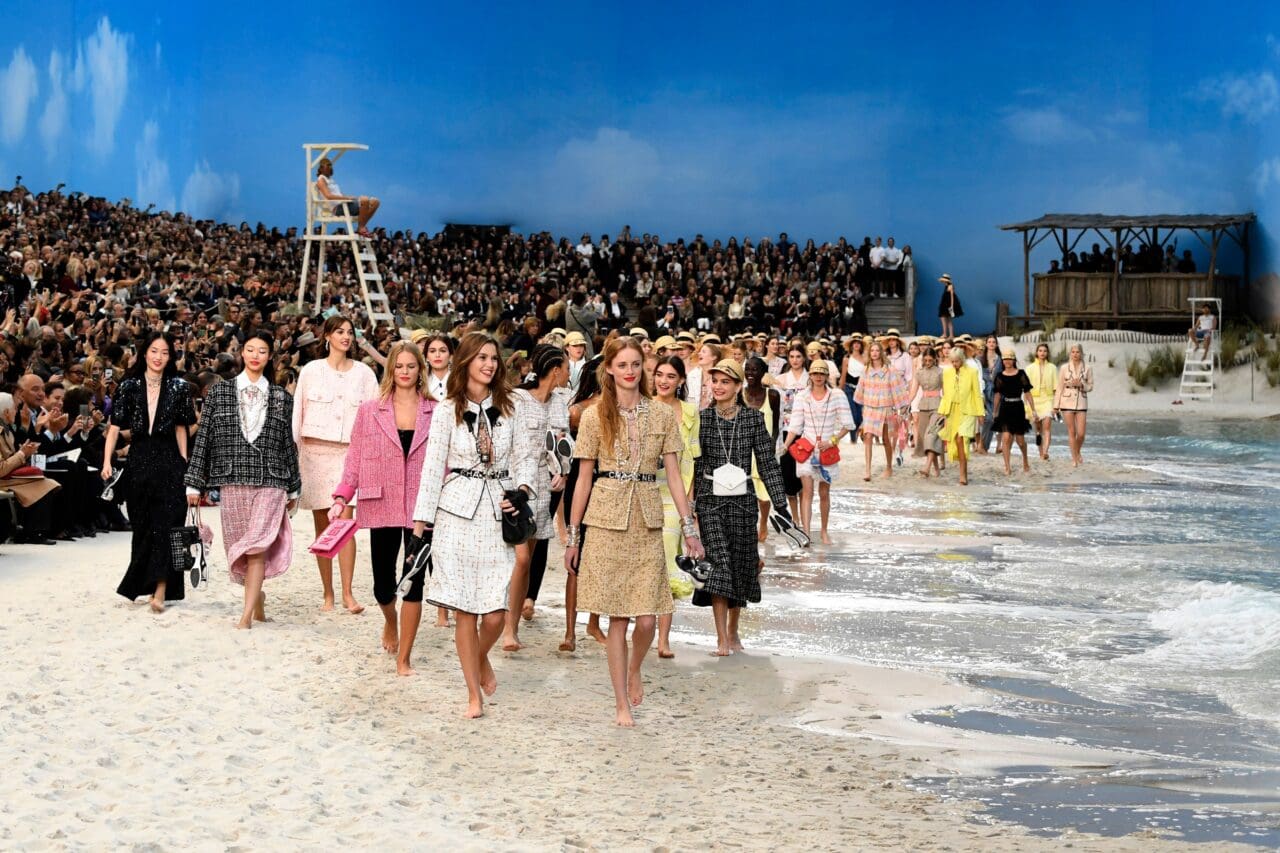
Empowering Discoveries
作為 20 世紀以來最偉大時裝設計師之一的 Karl Lagerfeld,過去以先鋒的創意成為一個時代的符號,亦是展現擁抱多樣性文化特色與思維的表表者。Karl Lagerfeld 在德國漢堡(Hamburg)出世,13歲到巴黎學畫,後來受到設計師 Pierre Balmain 青睞,隔年便到 Balmain 擔任助理,開展老佛爺在時裝界的傳奇一生。不同於當下的 Diversity 文化,Karl Lagerfeld 曾經在訪問時說過:「在設計 Chanel 時,我處在法國的靈魂;設計 Fendi 時,我便享受一段意大利的靈魂。」他的成功是能夠遊走藝術與商業的平衡,功妙地善用本身品牌的歷史價值與文化,透過自身的天馬行空創意與知識內涵經過一輪的翻新,締造一個又一個的經典設計。換句話說,他不像現在的年輕時裝設計師如何盼望宣揚自己出身地的文化,反之他盡可能將不同文化的特色淋漓盡致呈現起來。
讓我最印象深刻的一次,是他在2017年於自己家鄉 Hamburg 舉辦 Chanel Métiers d’ Art 時裝展,以航海與水手文化為主題,出現大量雙排釦海軍大衣或帽子,並以 Elbphilharmonie 音樂廳作為場址。當時的 Karl Lagerfeld 打趣道:「我首先是個漢堡人,而後才是德國人,這場大展上不會有一丁點跟我童年相關的元素。」確實,不像 Coco Chanel 女士擅長以自身的經歷化成經典設計,Karl Lagerfeld 則鍾情於在一個地方或是一件事上獲得靈感;猶如老師在創意寫作課堂上提供一個考題,讓學生自由發揮,這讓他在時裝產業縱橫半世紀,如他曾經所言:「時尚是不斷的意見交流。過去的成就並不重要,最重要的是當下對時尚發展做出的貢獻。不斷的挑戰也是這份職業吸引我的地方。」Karl Lagerfeld 對不同地方文化的愛,是無休無止,甚至可以賦予更多的靈魂。
INSPIRING JOURNEYS
至於另一位傳奇時裝設計師 Yves Saint Laurent,生前則喜歡周遊列國,從不同國家與城市文化激發想像,尋找創作靈感。去年參觀日本國立新美術館與 Musée Yves Saint Laurent 合辦的特展《Across the Style 》,當中展出 110 件高級訂制時裝,結合配飾、設計手稿和照片,並透過12個章節全面回顧這位法國時裝設計師的職業生涯。讓筆者難忘的,除了是展覽大量講及聖羅蘭先生與日本過去的緊密關係,更有不同章節剖析不同地方如中國、非洲、俄羅斯,讓他締造不同系列的設計主題,彷彿體會了「讀萬卷書不如行萬里路」的真理。至於充滿文藝精緻又具有歐洲遺風的摩洛哥,則成為 Yves Saint Laurent 一生最愛的地方。
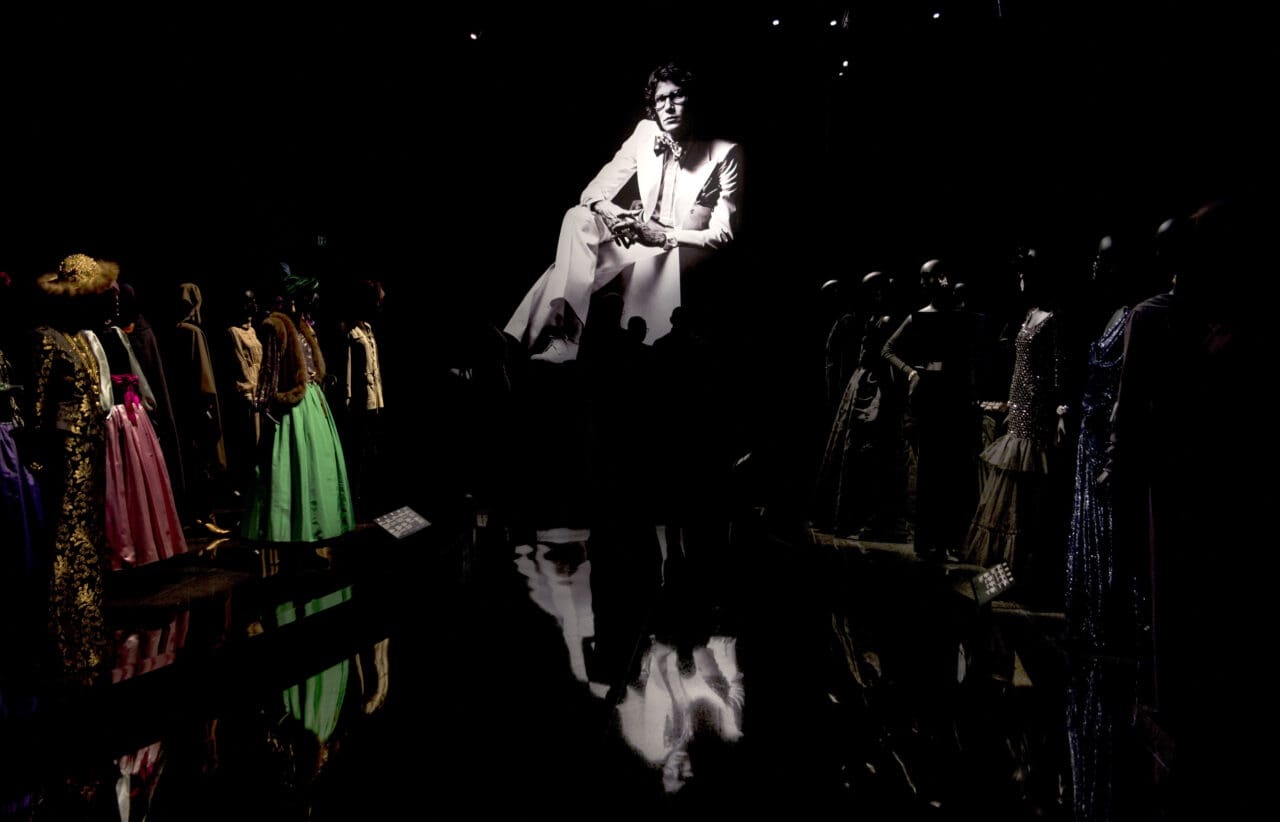
TOPSHOT - This picture taken on October 12, 2017 shows a view inside the new Yves Saint Laurent museum in the Moroccan city of Marrakesh. A fusion of the Moroccan traditions and contemporary flair that inspired Yves Saint Laurent, a museum to the famed fashion designer is set to be unveiled Saturday in his beloved Marrakesh. / AFP PHOTO / FADEL SENNA (Photo credit should read FADEL SENNA/AFP via Getty Images)

Vogue, August 1980 - Yves Saint Laurent wearing a caftan, working at a wooden table near the large doorway of his bedroom, which opens directly onto the garden, at his home in Marrakesh. (Horst P. Horst/Conde Nast via Getty Images)
當他與他的同性伴侶 Pierre Berge 首次踏足馬拉喀什(Marrakesh)後,對於這片充滿五彩斑斕氣質的城市所吸引,他曾說過:「Marrakesh 讓我學會色彩,在 Marrakesh 之前,世界都是黑色的。」他們當年發現 Jardin Majorelle 花園在原本的主人逝世後被閒置荒廢,決心「置地」並且定期居住,據說後來的高級訂製都是在此進行設計工作,又如1989年的春夏系列出現的絲綢羅緞的葛刺繡斗篷,如斯春意盎然,很多人形容它是 Marrakesh 花園的「倒影」。對於 Yves Saint Laurent 大師來說,摩洛哥是他的第二個家,2008 年逝世後長眠於這座色彩充沛的迷人之境,YSL 博物館則位於同一條 “Rue Yves St Laurent” 街道上,還陳列其一生中最具代表性和影響力的50件作品。我們常說旅行的意義,在 Yves Saint Laurent 身上,不難看得出一種對獨特文化而衍生的「一見鍾情」,這段「情」讓他的創作更為多姿多采。
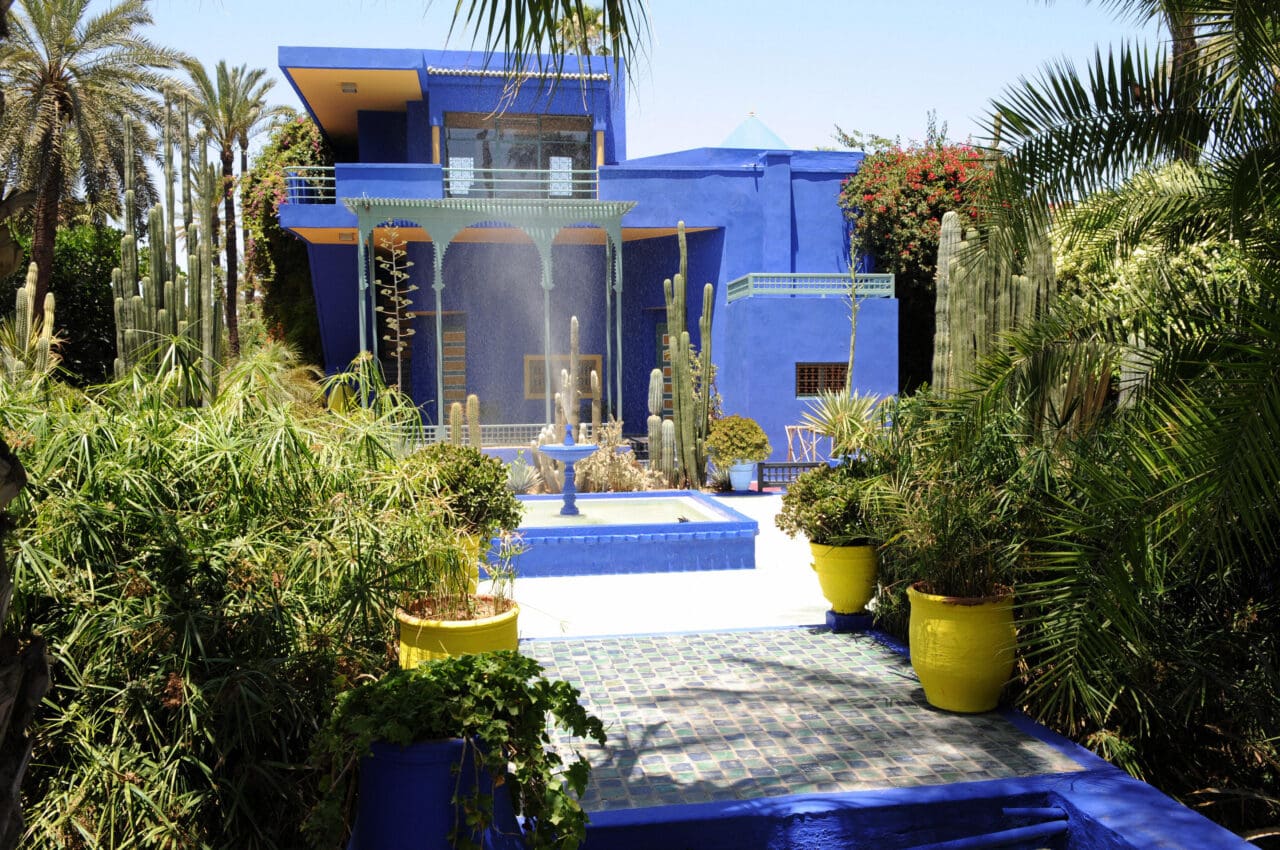
View of the Blue House of the Majorelle Garden in Marrakech on June 4, 2008, bought in 1980 by late French designer Yves Saint-Laurent and his then partner Pierre Berge. The garden houses the Islamic Art Museum of Marrakech, whose collection includes North African textiles from Saint-Laurent's personal collection as well as ceramics, jewelry, and paintings by Majorelle. Yves Saint Laurent died of a brain tumour aged 71 late June 1, 2008. The ashes of the designer will be scattered in the garden. AFP PHOTO / ABDELHAK SENNA (Photo credit should read ABDELHAK SENNA/AFP via Getty Images)
Uplifting Voyages
喜歡從旅行獲得靈感的,還有 Christian Louboutin。出生於法國巴黎12區的他,可說是一位土生土長的法國人。但 Christian Louboutin 自小便發現自己的皮膚異常比其他家人深色,後來才知道自己的生父是埃及人,他才了解到自己為何從小就迷上埃及和法老文化,更展開對旅行的無窮想像,「我自小已透過幻想環遊世界,經常翻閱旅遊雜誌,想像自己揹着背包展開漫長的旅程,預訂虛構的酒店和火車票,認識世界各地的人,並學習陌生的語言。擴闊眼界, 以及探索和認識世界。」Louboutin 曾在自己品牌的官方新聞稿這樣說。有別於上文所提及的 Yves Saint Laurent,Louboutin 小時候已經專注於探索不同地方的歷史文化,藉此找尋歸屬感;12 歲離家出走,16 歲被學校開除。經常逃離巴黎,去埃及旅行,還去印度花上一年時間旅行,每個地方都讓他感到好奇,認識世界是他最大的興趣,創作則是用來反映自己吸收不同文化的成果。
在「四處闖蕩」之後,這位骨子裏極為叛逆的設計師卻對葡萄牙情有獨鍾,「葡萄牙是我會選擇進行春夏系列設計工作的目的地之一。熱情的陽光,人們慵懶的生活態度,國際化的文化氛圍,這些都是我靈感的來源。」早在 1990 年代,Christian Louboutin 在 Lisbon、Comporta 等葡萄牙渡假聖地購入很多住宅,還喜歡每一年從 Alentejo 的小型刺繡工坊 Algarve 竹籃編織工作室學習工藝,還表示特別欣賞這些對色彩和紋理擁有極致感知能力的手工工匠。葡萄牙的陽光海灘讓 Christian Louboutin 為之迷戀,更在當地南部 Melides 開設 Vermelho Melides 酒店,當中的 “Vermelho” 在意大利文有着「紅色」的意思,正是象徵他標誌性的紅底高跟鞋。根據英國版《VOGUE》所說,Louboutin 有天在葡萄牙出了車禍,從當地一家醫院開車回家的路上,才發現 Melides 的風景如畫,結果深深愛上這個地方。Vermelho Melides 酒店收藏了意大利藝術家 Giuseppe Ducrot 手工雕刻作品、希臘藝術家 Konstantin Kakanias 壁畫作品與傳統葡萄牙瓷磚,還有 Klove Studio 打造的奢華壁燈,一切都是將 Christian Louboutin 的美學融入這間酒店之中。設計師大概如此,他們喜歡打開自己心窗,試圖開放性將不同地方的人與事轉化成自己的創作養份;不過像情侶配對一樣,總不能每一次都能擦出火花,而 Christian Louboutin 與葡萄牙可謂是渾然天成的 perfect match,詮釋真正的可遇不可求。
Positive experiences
執筆至此,不禁想起以先鋒聞名於世的 Pierre Cardin,他在法國康城海灣購入的「泡泡宮殿」(Bubble Palace)完美地演繹了他有多愛科幻和未來主義的文化,更加豪氣地說過:「我其他的房產無一不是用錢堆出來的,但 Bubble Palace 不一樣,在這裏你能看見我的性格,我的生活和我所有的愛。」回顧 Pierre Cardin 的生平,1922 年出生於意大利威尼斯,在 14 歲時因為路過法國公園旁的一家裁縫店,而被櫥窗中的設計服飾深深吸引,隨即向店家毛遂自薦進入店內從事裁縫學徒,自此展開時裝設計的生涯。他特別喜歡不同地方的建築文化,造就他的設計線條特別新穎破格。Pierre Cardin 在 1954 年成功設計出時裝歷史上重要的設計:Bubble Dress,其下襬臃腫、上半身簡約和整體形狀怪異的裙子,讓他在當時紅透半邊天;後來的家具系列中更進一步表達他對圓弧形狀的熱愛。另外,Pierre 同樣留意亞洲文化,他可說是第二次世界大戰後首位以西方時尚注入亞洲市場的第一人,更親自在日本東京推廣自己品牌,當地的次文化對他帶來極大的影響。但要數到最讓人津津樂道的,莫過於是他買下由匈牙利奇幻建築師 Antti Lovag 所設計的 Palais Bulles,具未來科幻感的設計讓他愛不釋手,更多次在這裏舉行個人品牌的時裝展;Pierre Cardin 的設計與這個奇幻建築物同樣自由奔放,因而成為他在創作上專屬的小天地,更成為其 comfort zone。
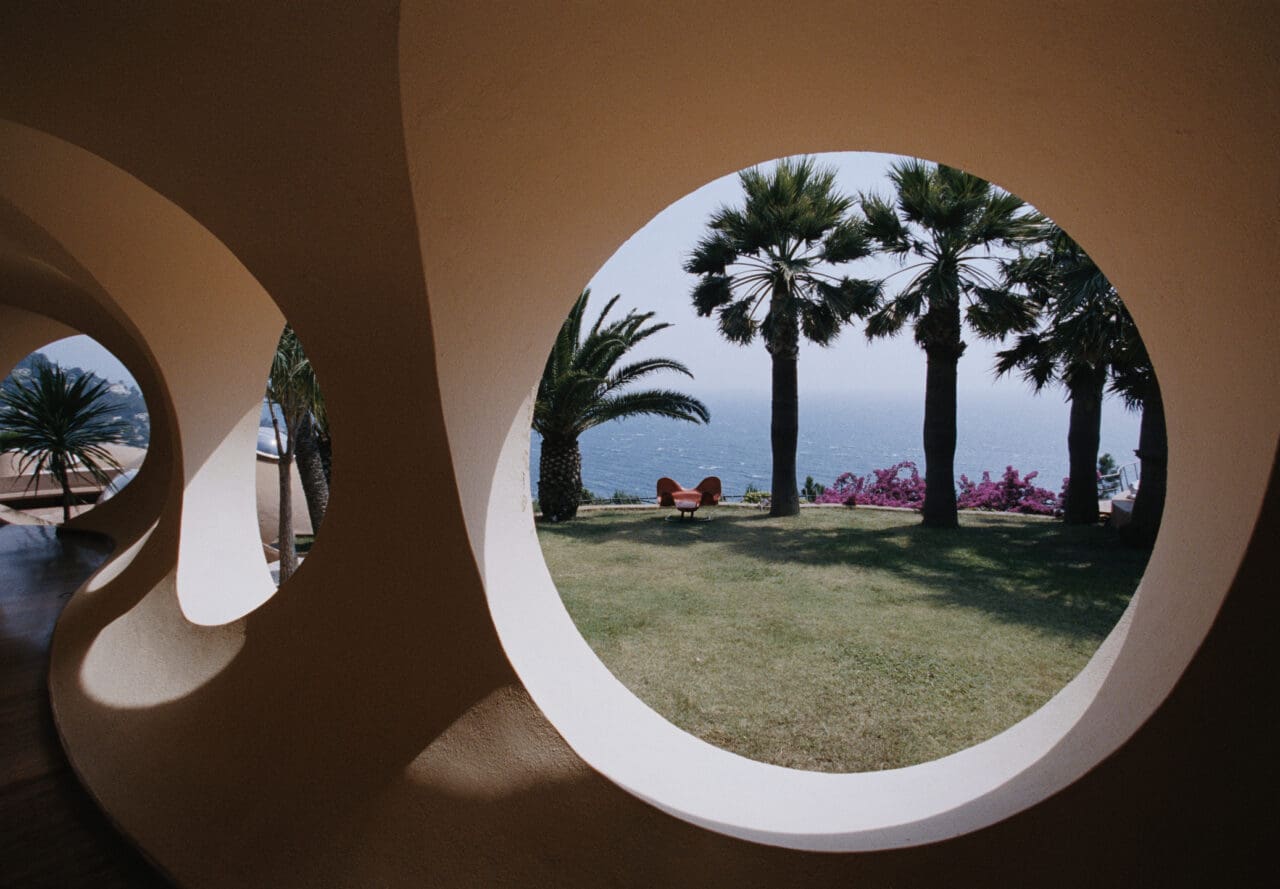
Le Palais Bulles, or The Bubble Palace, sits atop a hillside in Theoule-sur-Mer in the French Riviera, overlooking the Mediterranean Sea. The futuristic mansion, comprised of rounded rooms with rotating floors, was designed by Pierre Cardin and architect Antti Lovag. (Photo by Eric Robert/Sygma/Sygma via Getty Images)
然而,在流行政治正確(Political Correctness)的年代,大家對傳達重視積極平權、保障多元族群等觀念特別認真看待;導致過往部分時裝設計師的作品被批評是「文化取樣」(Cultural Sampling)或是「文化挪用」(Cultural Appropriation),單純借用異國文化實踐自己的設計題材,像 Yves Saint Laurent 和 John Galliano 的 Dio r時期亦曾經一度成為時尚迷探討的議題,全因前者的《Chinese Collection》,還是後者以《蝴蝶夫人》為主題的高訂系列,同樣以東方文化為創作靈感。在種種聲音之下,時尚學者 Osman Ahmed 卻表達自己的個人想法:「挪用能成為積極的力量,創造文化間交流、為創作人提供風多可用的表達詞彙。」對於上述的一眾時尚大師來說,他們顯然沒有刻意為時裝設計而刻意添加異國文化的想像,反而透過親歷其境的方式塑造經典,利用一針一線表達對該文化的真摯熱愛,甚至與當地生活連繫在一起,可謂是人與地的完美聯乘。
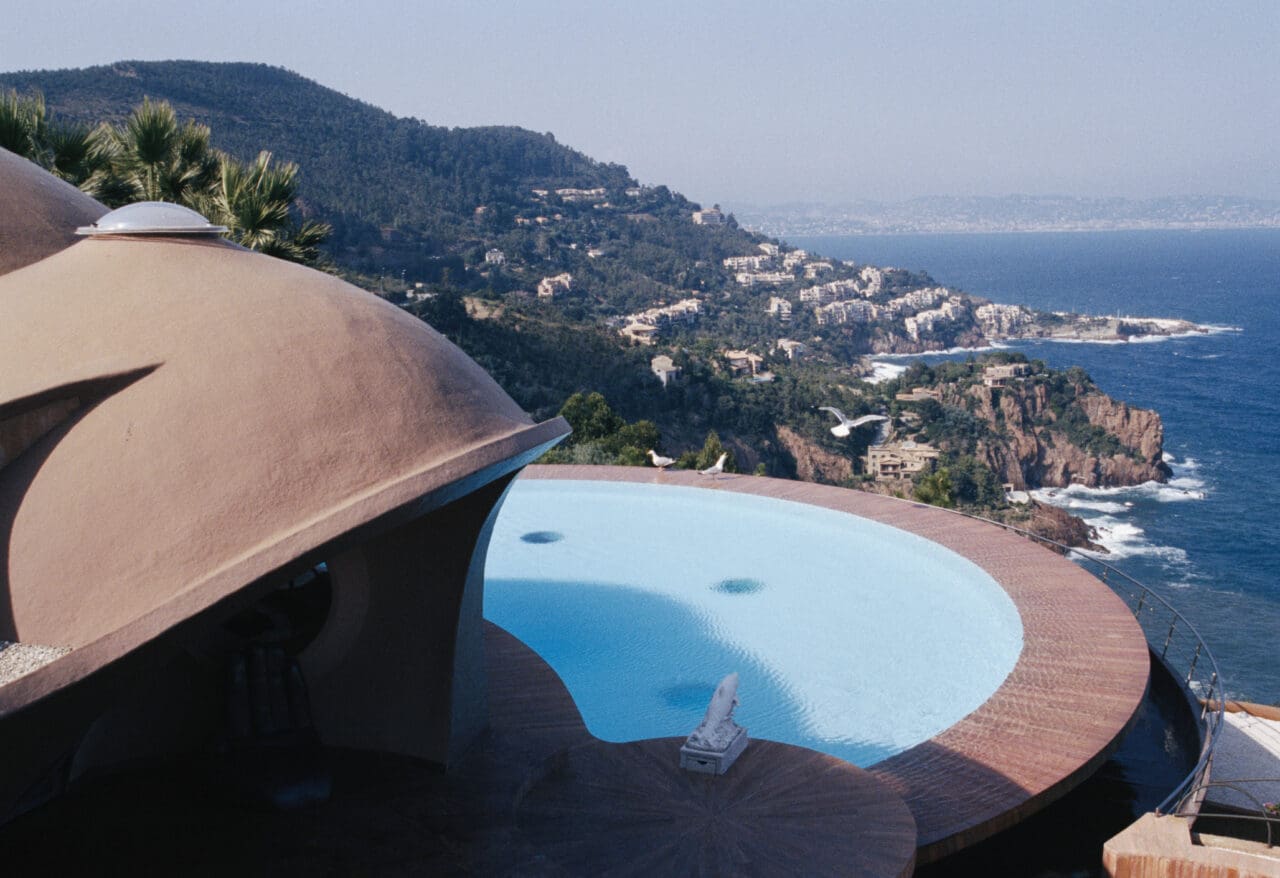
Le Palais Bulles, or The Bubble Palace, sits atop a hillside in Theoule-sur-Mer in the French Riviera, overlooking the Mediterranean Sea. The futuristic mansion, comprised of rounded rooms with rotating floors, was designed by Pierre Cardin and architect Antti Lovag. (Photo by Eric Robert/Sygma/Sygma via Getty Images)
Editor
Simon AuCredit
Photo courtesy of Saint Laurent, Christian Louboutin, Vermelho Melides and Getty Images






